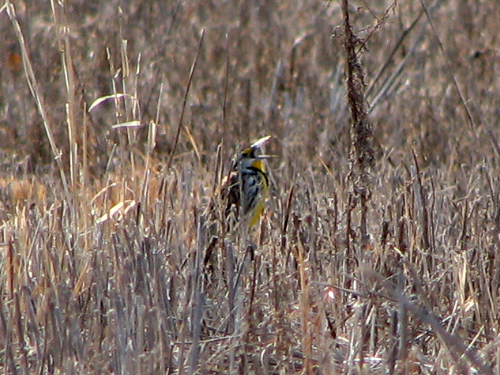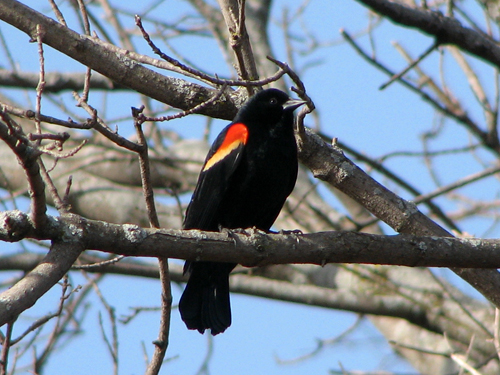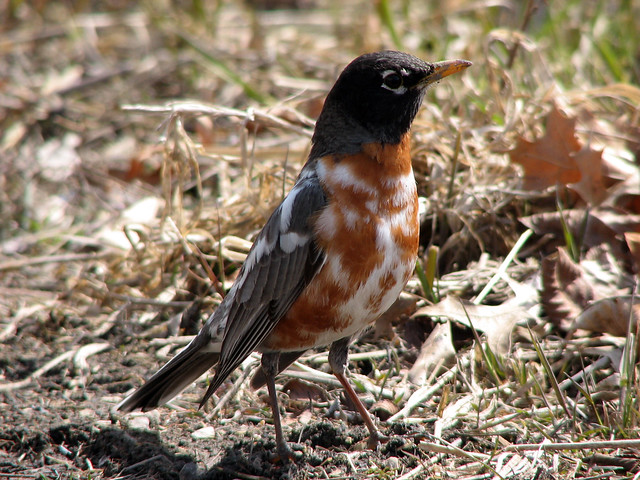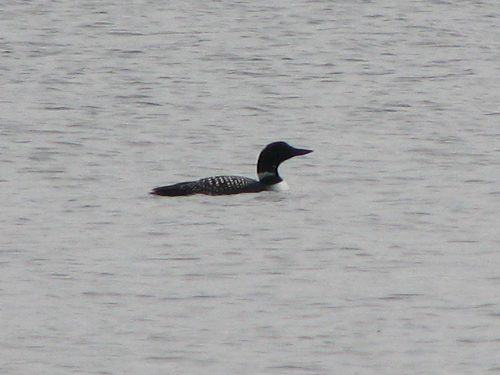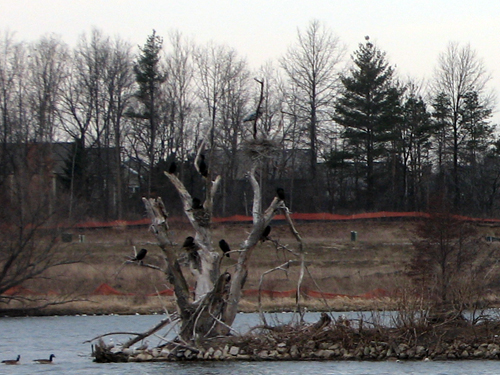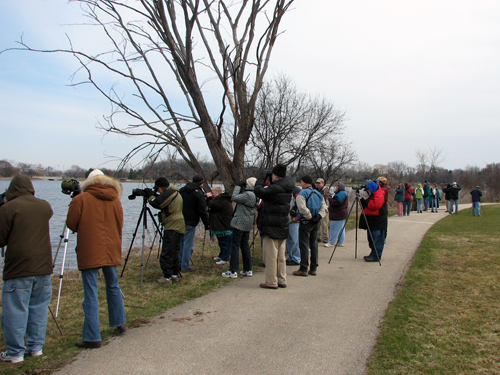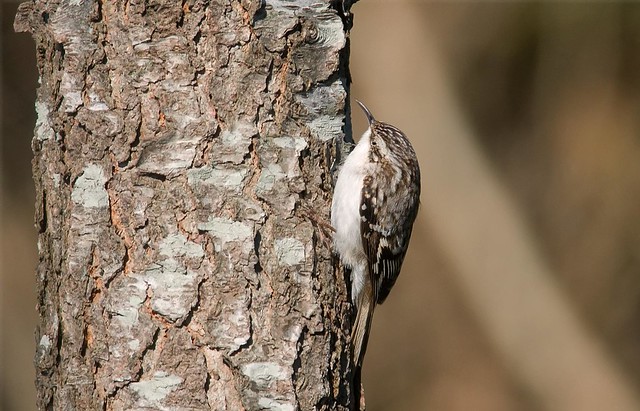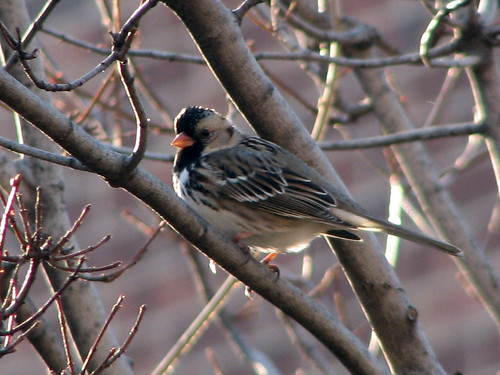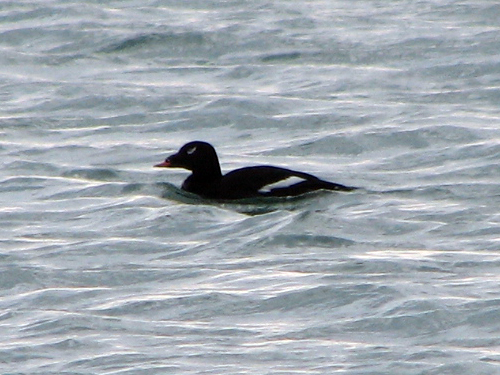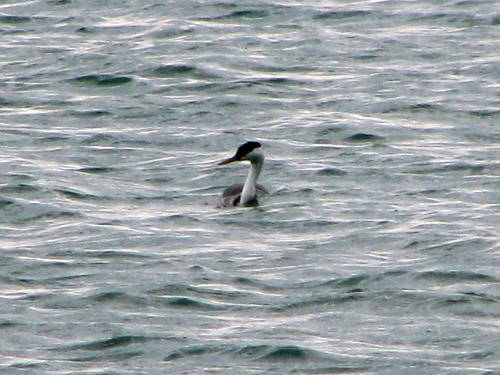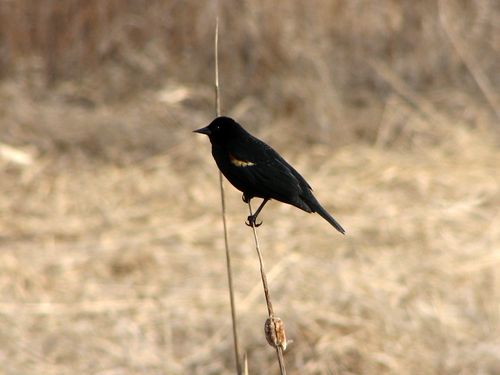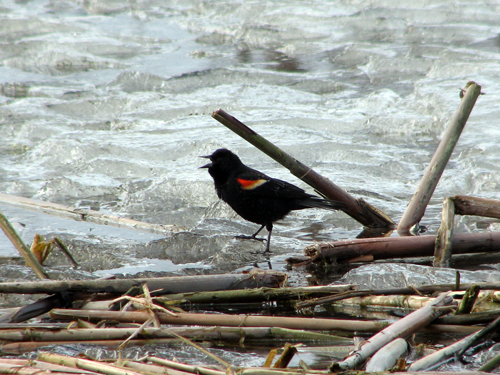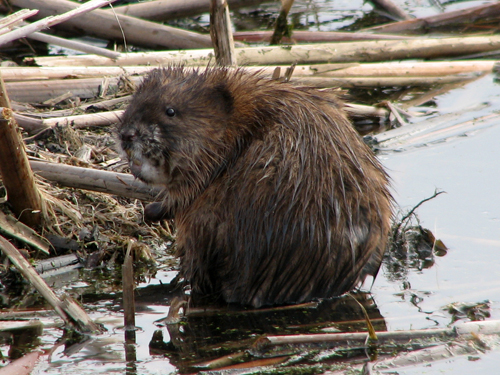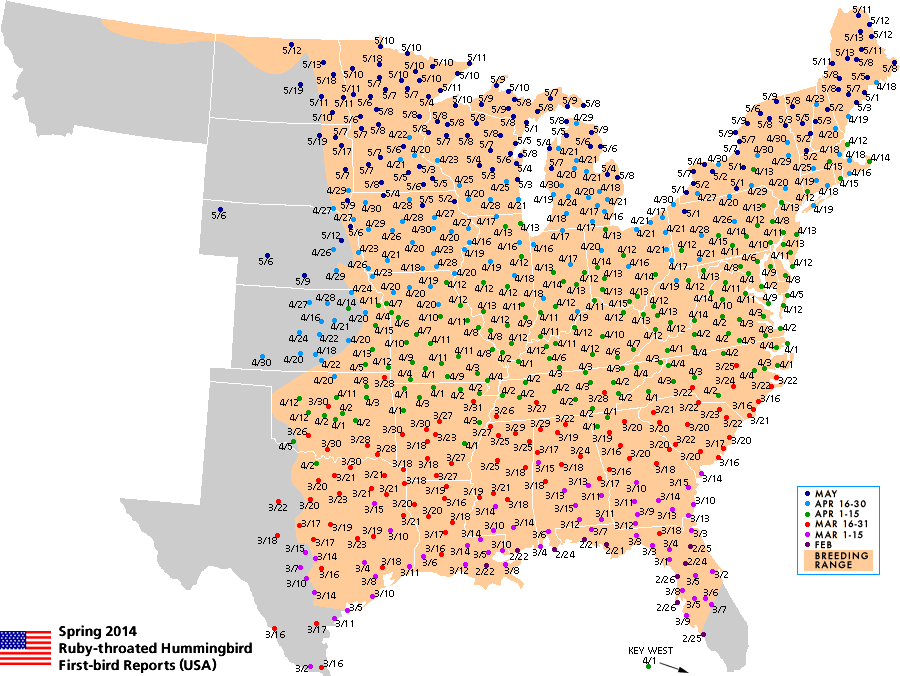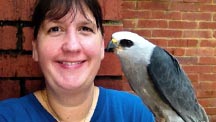The Raptor Internship at Flint Creek Wildlife Rehabilitation is starting to wind down — there’s just two more weeks to go! Week 10’s lecture focus was medical care for raptors. There were two coping demonstrations and then we all got in some handling practice. Three students from the Saturday class joined us, so there were eight of us on Tuesday!
The rehabilitation activities at Flint Creek are on the rise as spring babies get into trouble and need help. The first baby squirrels of the season were in Dawn’s care and we got the chance to see them being fed. Look how tiny!
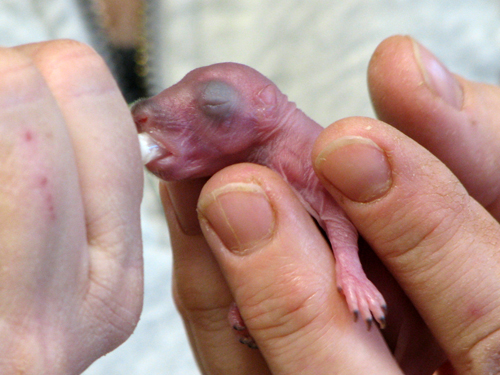
Around lunchtime, Zen came in for a visit. Zen is FCWR’s Cooper’s Hawk.

Two birds had to be taken from their mews, and we drew cards to see who would get them. My card said “JR” so I went out to get Junior, the Great Horned Owl. I was warned that he might give me some trouble, maybe by hanging from the ceiling or by just flying from perch to perch as I would try to get him on the glove. Well, ‘some trouble’ was an understatement. I stepped into his mew and he hopped up to a high perch. I moved my ladder to him and climbed up to offer my glove. He flew up to the ceiling and hung there like a bat. For a very long time. I would climb up towards him and he’d fly off to another perch. This went on and on for some time, most of it with me looking up at Junior hanging completely upside-down from the ceiling. He was getting tired and so was I.
Finally he flew down to the floor of his mew and I could get one jess in. He was standing on my arm very awkwardly and as I stood up to adjust and get him down onto my glove, he bated. I held tight onto the jess while he flopped around until he was finally hanging prone. I lifted him up and got back to work. I got so hot and sweaty out there trying to get Junior, and when I was done I had to hand him over immediately to Karen, one of FCWR’s volunteers, so he could be brought inside.
I had been outside for so long I think I missed some lecture about coping. Coping is the term for clipping, filing and otherwise reshaping beaks and talons. In the wild, raptors wear down their beaks and talons on natural rough surfaces. Coping is a part of regular maintenance for education raptors.
I was happy to finally sit in my chair, relax, and see what other interns would be doing. Classmate Connie had drawn the ‘hold Meepy’ card, which meant she would hold and control Meepy while she was being coped. Meanwhile classmate Lee stood at the back of the room, holding Meepy. She asked to be relieved and, well, without thinking really I kind of jumped up with my glove to get her, practically before Dawn asked if someone could take her. I figured I would just hold her for a minute before passing her to Connie and Dawn for coping… like some positive reinforcement for me after my ordeal with Junior (because, well, I just love Meepy).
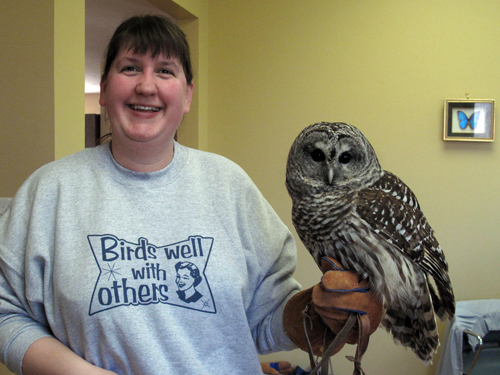
When it was time I brought Meepy up to the front of the room and Dawn thought maybe she could try coping Meepy on the glove. Very, very cool! But then I felt very, very bad for having jumped up to take Meepy in the first place. Meepy’s talons didn’t need any work but her beak did, so Dawn worked on clipping and then filing smooth Meepy’s beautiful Barred Owl beak.
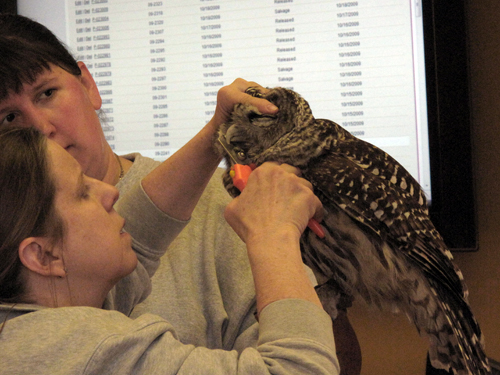
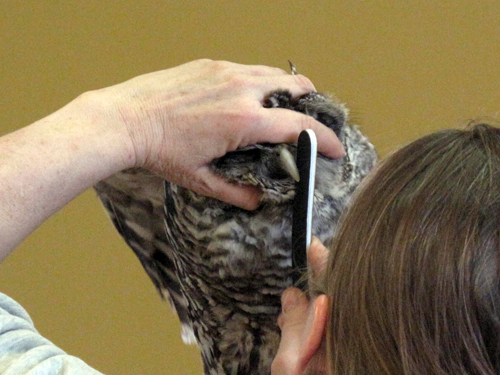
As usual Meepy was a star – she did great! She got a mouse for being so good.
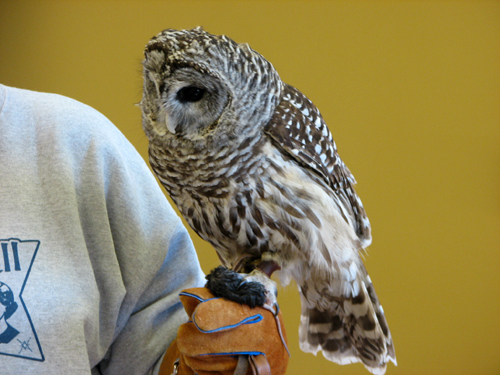
When Meepy was done, it was time to work on Junior. First Dawn put him into position on the table and covered his head. Covering the eyes helps a bird to relax in a stressful situation. Fellow student Kristi then held Junior while Dawn clipped and filed his beak.
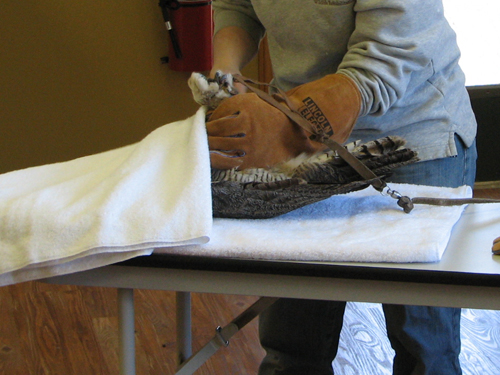
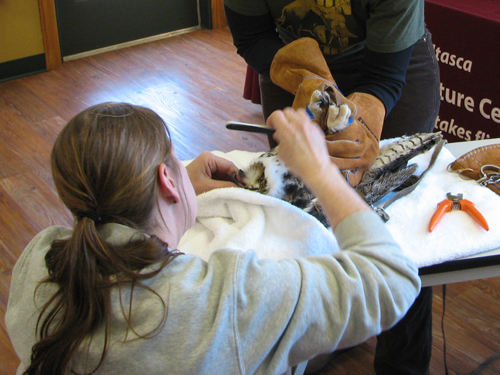
Later we took turns walking with birds and then got to hold Old Red, another FCWR Red-tailed Hawk. First I took Meepy for a long walk and then held onto Red before she was put back into her mew.
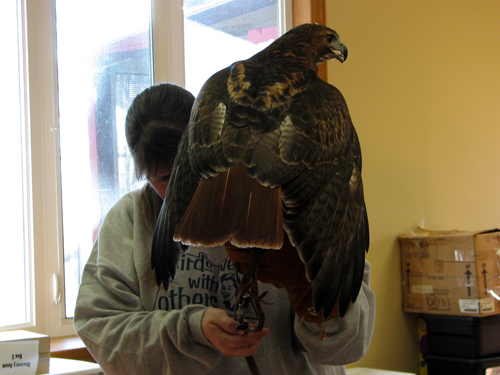

Big thanks to all of my classmates who were so kind to grab my camera to take photos of me holding Meepy and Old Red. Special thanks to Kristi for sending me pictures of Meepy being coped.
Next week: more on medical care, rehabilitation, and review for the final exam!
Share the birds, share the love!

